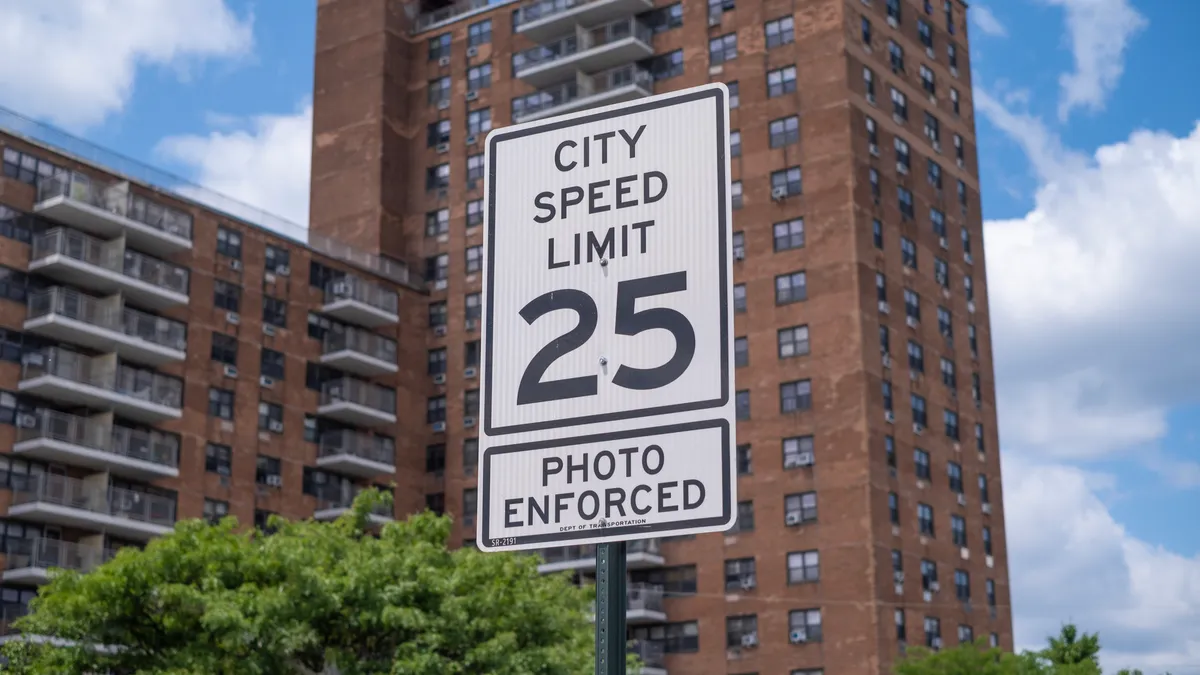Dive Brief:
- California Gov. Gavin Newsom signed legislation on Oct. 13 to allow six cities in the state to deploy automated speed safety cameras as a pilot program.
- The law, known as AB 645, designates the cities of Los Angeles, San Jose, Oakland, Glendale and Long Beach along with the city and county of San Francisco to establish and operate a speed enforcement program under specific conditions set forth in the legislation until Jan. 1, 2032.
- Over 1,500 people died in speeding-related California traffic accidents in 2021, according to National Highway Traffic Safety Administration data.
Dive Insight:
According to Streetlight Data, a transportation data analytics company, a pedestrian is twice as likely to be killed by a car traveling at 30 mph compared to a vehicle moving at 20 mph. In a 2023 report, Streetlight Data analyzed the average vehicle speeds on major pedestrian roads in 30 U.S. cities. Compared with the other cities, San Francisco had a high percentage of roadways with average speeds under 25 mph. Other California cities, however, saw faster vehicle speeds on pedestrian roads; one third of San Jose roads and a quarter of Los Angeles roads had average speeds over 35 mph.
The city of Oakland, which sees two residents killed or seriously injured in traffic collisions every week, notes that “These crashes disproportionally impact BIPOC communities, seniors, children, and people with disabilities.” (BIPOC refers to Black, Indigenous and people of color.) AB 645 requires participating cities to issue warning notices rather than violations within the first 60 days of the program and that camera locations be clearly labeled. Prior to establishing speed enforcement cameras, the city has to conduct a public information campaign for at least 30 days. A first violation for a vehicle traveling 11 to 15 mph over the speed limit will only receive a warning notice.
“Dangerous speeding hurts and kills people every day in California, and every possible action must be taken to prevent these senseless tragedies,” said Jodie Medeiros, executive director of Walk San Francisco, a sponsor of the legislation, in a press release. “Finally, cities like San Francisco can start using a proven tool to protect communities from deadly speeding.”
The method has been effective in other cities. New York City has more than 2,000 speed enforcement cameras in school zones. Between 2019 and 2021, speeding declined 73% on average where fixed cameras were installed, and the city’s transportation department found areas that got cameras in 2019 saw a greater decrease in deaths and serious injuries the following year, compared with similar roads outside school zones.












